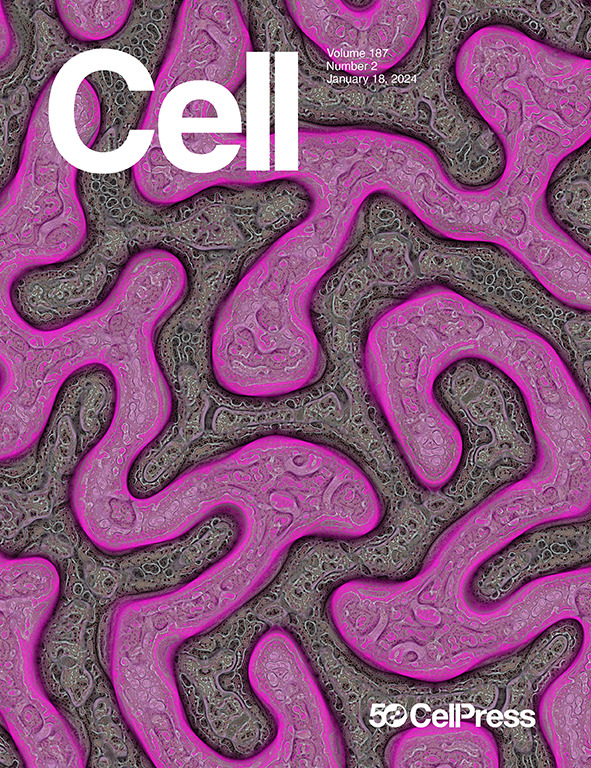Trichophyton concentricum fungal infections and skin microbiomes of Indigenous Peninsular Malaysians
IF 45.5
1区 生物学
Q1 BIOCHEMISTRY & MOLECULAR BIOLOGY
引用次数: 0
Abstract
Recent outbreaks of multidrug-resistant fungi infecting human skin emphasize the importance of understanding fungal pathophysiology and spread. In efforts to address health concerns with various Indigenous Peninsular Malaysians (Orang Asli [OA]), tinea imbricata—a Trichophyton concentricum fungal skin infection—emerged as a particular concern. We investigated the etiology and transmission of tinea imbricata by culturing, testing antifungal sensitivities, and sequencing T. concentricum isolates in remote OA villages. Among regionally conserved isolates, we identified the emergence of terbinafine-resistant T. concentricum microbiologically and genomically. Investigating the skin microbiomes of 82 Indigenous OA, we found unique microbiota and lower relative abundances of bacterial commensals (Cutibacterium acnes, Staphylococcus epidermidis) among OA versus Malaysian and US urban populations, emphasizing how understudied populations provide unprecedented knowledge on host-microbiome co-evolution. These findings provide valuable insights into clinical, microbiological, and genomic features of chronic fungal skin infections, offering the potential to inform strategies to address drug resistance and effective therapy.

马来半岛原住民集中毛癣菌真菌感染与皮肤微生物组
最近暴发的多药耐药真菌感染人体皮肤强调了了解真菌病理生理和传播的重要性。在努力解决各种马来半岛土著居民(Orang Asli [OA])的健康问题时,毛癣(一种集中毛癣真菌皮肤感染)成为一个特别令人关注的问题。我们通过培养、抗真菌敏感性测试和对OA偏远村庄的集中T.分离株进行测序来调查毛癣的病原学和传播。在区域保守的分离株中,我们从微生物学和基因组学上发现了耐特比纳芬的集中梭菌。研究人员调查了82个土著OA的皮肤微生物群,发现OA与马来西亚和美国城市人群中独特的微生物群和较低的细菌共生菌(痤疮角质杆菌,表皮葡萄球菌)相对丰度,强调未被充分研究的人群如何提供前所未有的宿主-微生物群共同进化知识。这些发现为慢性真菌皮肤感染的临床、微生物学和基因组特征提供了有价值的见解,为解决耐药性和有效治疗提供了潜在的信息策略。
本文章由计算机程序翻译,如有差异,请以英文原文为准。
求助全文
约1分钟内获得全文
求助全文
来源期刊

Cell
生物-生化与分子生物学
CiteScore
110.00
自引率
0.80%
发文量
396
审稿时长
2 months
期刊介绍:
Cells is an international, peer-reviewed, open access journal that focuses on cell biology, molecular biology, and biophysics. It is affiliated with several societies, including the Spanish Society for Biochemistry and Molecular Biology (SEBBM), Nordic Autophagy Society (NAS), Spanish Society of Hematology and Hemotherapy (SEHH), and Society for Regenerative Medicine (Russian Federation) (RPO).
The journal publishes research findings of significant importance in various areas of experimental biology, such as cell biology, molecular biology, neuroscience, immunology, virology, microbiology, cancer, human genetics, systems biology, signaling, and disease mechanisms and therapeutics. The primary criterion for considering papers is whether the results contribute to significant conceptual advances or raise thought-provoking questions and hypotheses related to interesting and important biological inquiries.
In addition to primary research articles presented in four formats, Cells also features review and opinion articles in its "leading edge" section, discussing recent research advancements and topics of interest to its wide readership.
 求助内容:
求助内容: 应助结果提醒方式:
应助结果提醒方式:


